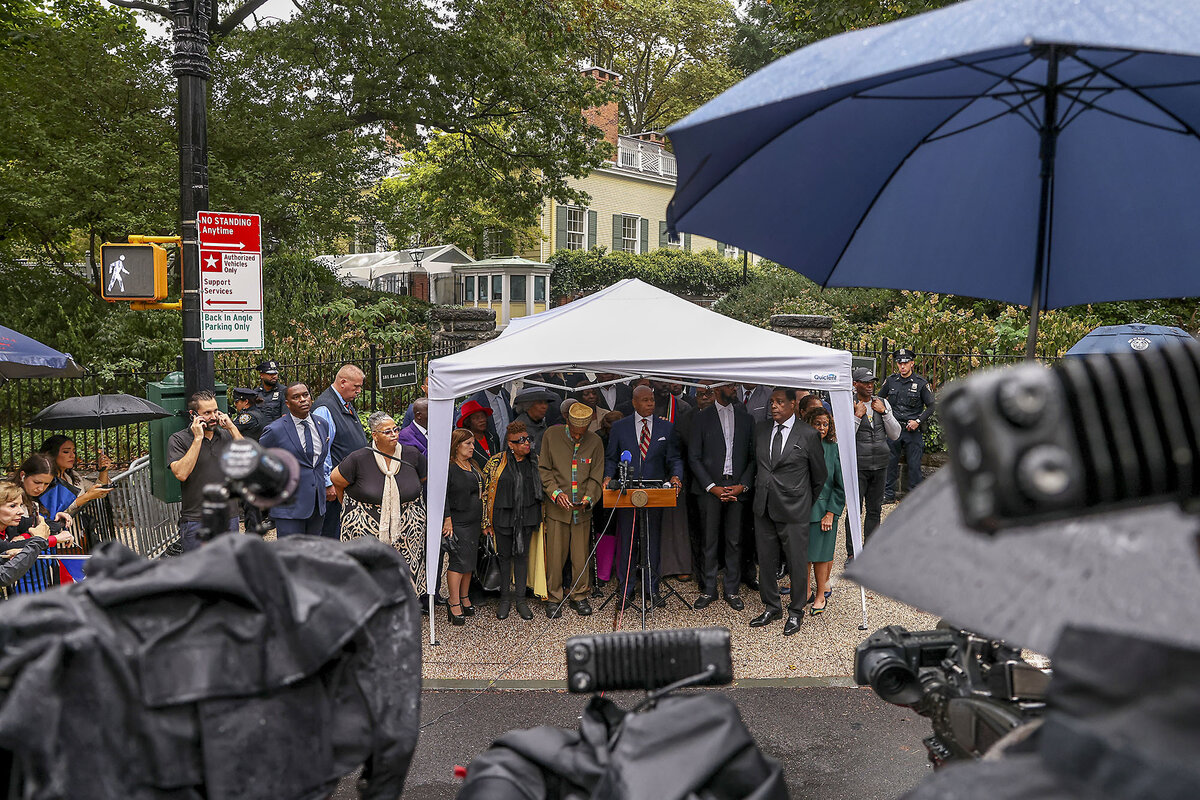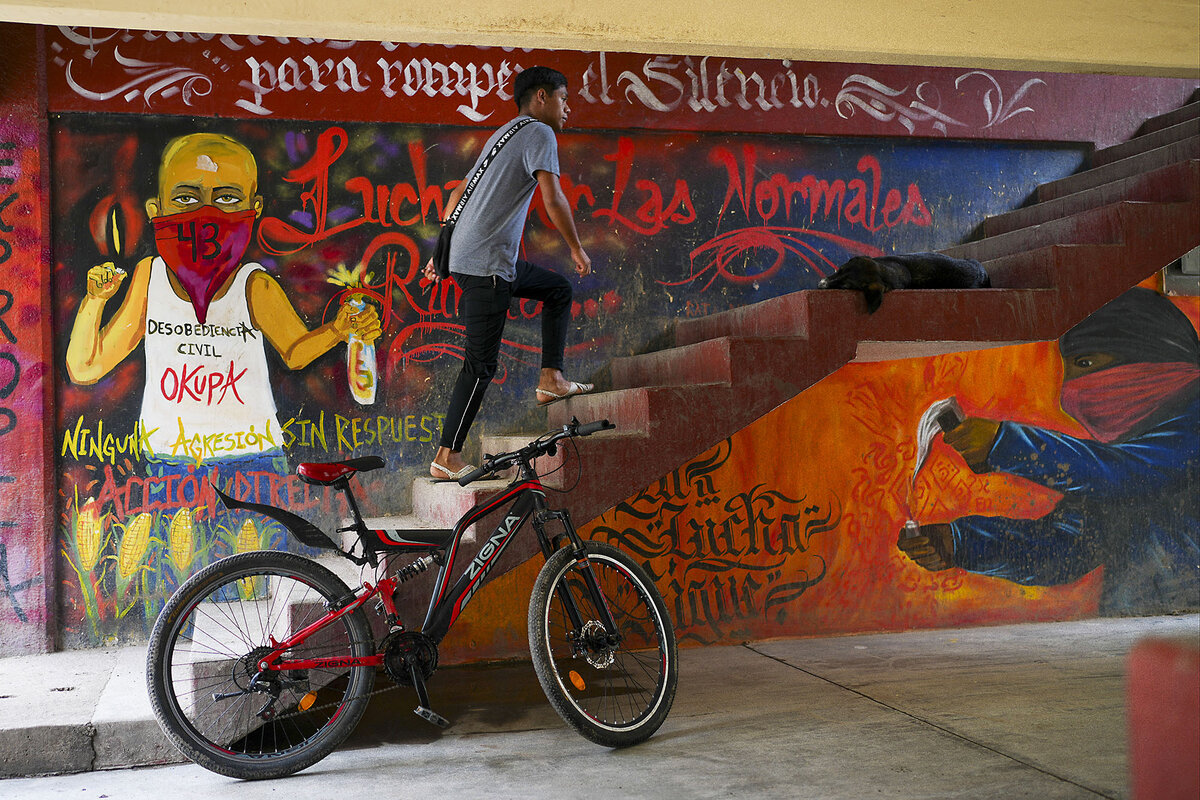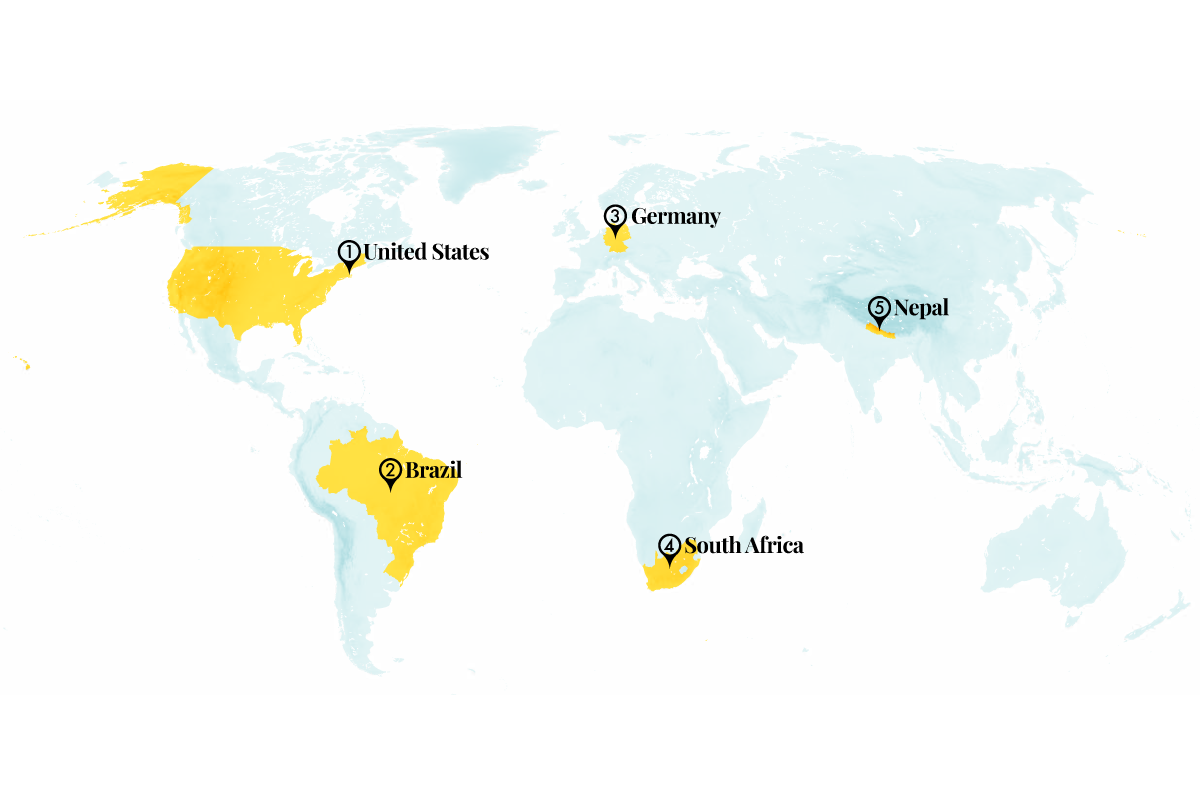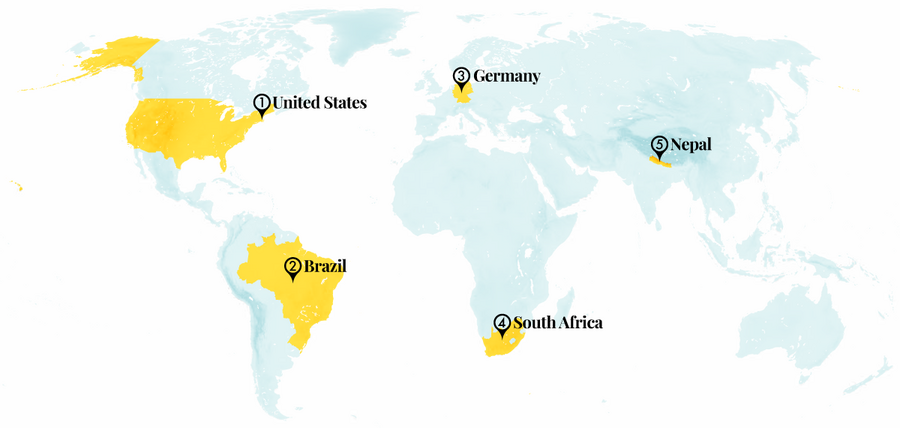The corruption indictment against Mayor Eric Adams of New York City is a blow to Democrats right before the November elections. Could it have ripple effects on the presidential campaign or congressional races?

Why is Christian Science in our name?
Our name is about honesty. The Monitor is owned by The Christian Science Church, and we’ve always been transparent about that.
The Church publishes the Monitor because it sees good journalism as vital to progress in the world. Since 1908, we’ve aimed “to injure no man, but to bless all mankind,” as our founder, Mary Baker Eddy, put it.
Here, you’ll find award-winning journalism not driven by commercial influences – a news organization that takes seriously its mission to uplift the world by seeking solutions and finding reasons for credible hope.
Explore values journalism About usMonitor Daily Podcast
- Follow us:
- Apple Podcasts
- Spotify
- RSS Feed
- Download
Green hydrogen from seawater and scrap aluminum?
The best innovations help with two or more problems at once. They utilize what’s at hand. In today’s Points of Progress column we land on the work of researchers trying to create a clean option for maritime fuel, which is notoriously polluting.
Could the discovery decarbonize heavy industry, or power homes, as the global need for energy rises? We’ll see. But it’s a Monitor hallmark to note credible wins, even nascent ones. And the turning of ocean-going vessels into old-school settings for the future of power generation represents a step worth watching.
Already a subscriber? Log in
Help fund Monitor journalism for $11/ month
Monitor journalism changes lives because we open that too-small box that most people think they live in. We believe news can and should expand a sense of identity and possibility beyond narrow conventional expectations.
Our work isn't possible without your support.
Today’s stories
And why we wrote them
( 5 min. read )
Today’s news briefs
• Ukraine aid package: President Joe Biden announces more than $8 billion military assistance for Ukraine to help Kyiv “win this war” against Russian invaders, making the major commitment during a visit from President Volodymyr Zelenskyy.
• Helene bears down: Fast-moving Hurricane Helene advances across the Gulf of Mexico toward Florida. Forecasters say the storm is threatening a “catastrophic” storm surge in northwestern parts of Florida.
• Recruiting goals met: The U.S. Army, Air Force, Marine Corps, and Space Force are all on track to meet recruiting goals. The results reflect a slight uptick in young people joining the military, following several very difficult years and a swath of new programs and enticements. The Navy is the only service that won’t hit its goal this year, but it will come close.
• Editors sentenced: A Hong Kong court sentences former Stand News Editor-in-Chief Chung Pui-kuen to 21 months in prison in a sedition case seen as an indicator of waning media freedom in the city. Another editor was freed after his sentence was reduced.
• Mexico snubs Spanish king: A fight dating back more than five centuries reemerges as Mexico’s incoming president defends a decision to not invite the Spanish king to her inauguration after the monarch declined to apologize for colonial-era abuses.
A deeper look
( 8 min. read )
Protests usually express opposition. But in Mexico, where parents of disappeared students have marched for 10 years, grief has fueled a social movement that is more powerful than dissent.
( 6 min. read )
Key details are emerging from both a House hearing and a Senate report on Secret Service lapses in security for presidential candidates. A bipartisan effort in Congress aims to identify and fix systemic problems.
Interview
( 7 min. read )
While reporting on state-level preparations for the coming election, our reporter sat down with Georgia’s Republican secretary of state. In the interview, Brad Raffensperger warns that last-minute rule changes by the state’s right-wing election board are undermining prospects for a smooth ballot count. Voter trust and election integrity are at stake.
On Film
( 3 min. read )
“Godfather” director Francis Ford Coppola waited 40 years to make his passion project. After seeing it, the Monitor’s film critic wonders, “What in tarnation has he wrought?”
Points of Progress
( 4 min. read )
In our progress roundup, scientists used resources close at hand to come up with new climate adaptation and mitigation solutions. Plus, three short reports on equality and justice from South Africa, Brazil, and Nepal.
The Monitor's View
( 2 min. read )
A courtroom exchange on Tuesday in the West African nation of Senegal drew out what may be a key to resolving one of the most pernicious aspects of mass migration. Under vigorous questioning from the judge, a defendant acknowledged his role in transporting people illegally. Then he asked for “everyone’s forgiveness.”
The scale of human smuggling around the world is hard to quantify. The global population of migrants nears 300 million, according to the United Nations. Much of that movement crosses the Mediterranean Sea. At one point, as many as 90% of people reaching Europe irregularly from Africa moved through criminal networks, generating billions of dollars in illicit commerce.
Europe has tried a range of strategies to curb the flow. In its latest move, the European Union launched a new network Wednesday to coordinate efforts among its 27 member states to counter drug trafficking, money laundering, and people smuggling.
The last issue has become a focal point of cooperation among governments in North Africa. The region is a key point of departure for people fleeing poverty, conflict, and the effects of climate change. So far this year, the U.N. reports, roughly 47,000 people have reached Italy alone by sea.
In Senegal, a succession of tragedies off the coast involving capsized vessels overcrowded with migrants has prompted a new government to crack down on criminal operations. Arrests have soared, resulting in the prosecution of 210 smugglers so far this year, Le Monde reported.
For countries on the receiving end of mass migration, addressing the root causes for why people leave their homes may be out of reach. Tunisia, for example, has little ability to shape events in Sudan or the Democratic Republic of Congo, where wars are displacing millions.
In South Africa, the police force in Johannesburg has found that compassion is an essential tool in countering migrant smuggling. A “victim-centered approach” that involves society in caring for targets of such crimes, “builds a relationship of trust that would be critical ... in the investigation meant to bring the criminals to justice,” a U.N. report observed last year.
The trial in Senegal’s seaside port of Mbour may have given that approach a new dimension. When the defendant Cheikh Sow sought forgiveness based on contrition, he evoked a distinctly African concept of justice rooted in redemption.
“A remorseful apology can contribute to a vocabulary of forgiveness in the context of evil,” wrote Pumla Gobodo-Madikizela, a psychology professor at Stellenbosch University in South Africa. Her research on post-apartheid healing underscores the enabling effect of empathy. “Genuine remorse humanizes perpetrators and transforms their evil from the unforgivable into something that can be forgiven.”
Mr. Sow’s case has yet to be decided. Yet his remorse may encourage a view of justice in Senegal that finds a solution to migration and the criminality that exploits it in the recognition and restoration of individual integrity.
A Christian Science Perspective
Each weekday, the Monitor includes one clearly labeled religious article offering spiritual insight on contemporary issues, including the news. The publication – in its various forms – is produced for anyone who cares about the progress of the human endeavor around the world and seeks news reported with compassion, intelligence, and an essentially constructive lens. For many, that caring has religious roots. For many, it does not. The Monitor has always embraced both audiences. The Monitor is owned by a church – The First Church of Christ, Scientist, in Boston – whose founder was concerned with both the state of the world and the quality of available news.
( 4 min. read )
In yielding to God, good, as the only true cause of existence, we’re able to assert our freedom from whatever type of inharmony would claim to have power, and to experience healing.
Viewfinder

A look ahead
Thanks for exploring with us today. For tomorrow, we’re working on a lineup that includes a pair of features with a Friday feel: Ken Makin reviews “The Wild Robot,” a new animated film based on the bestselling children’s picture book. And Ann Scott Tyson joins Asia Editor Lindsey McGinnis on our “Why We Wrote This” podcast to talk about gathering (including by bicycle) some oft-ignored perspectives from Taiwan.











